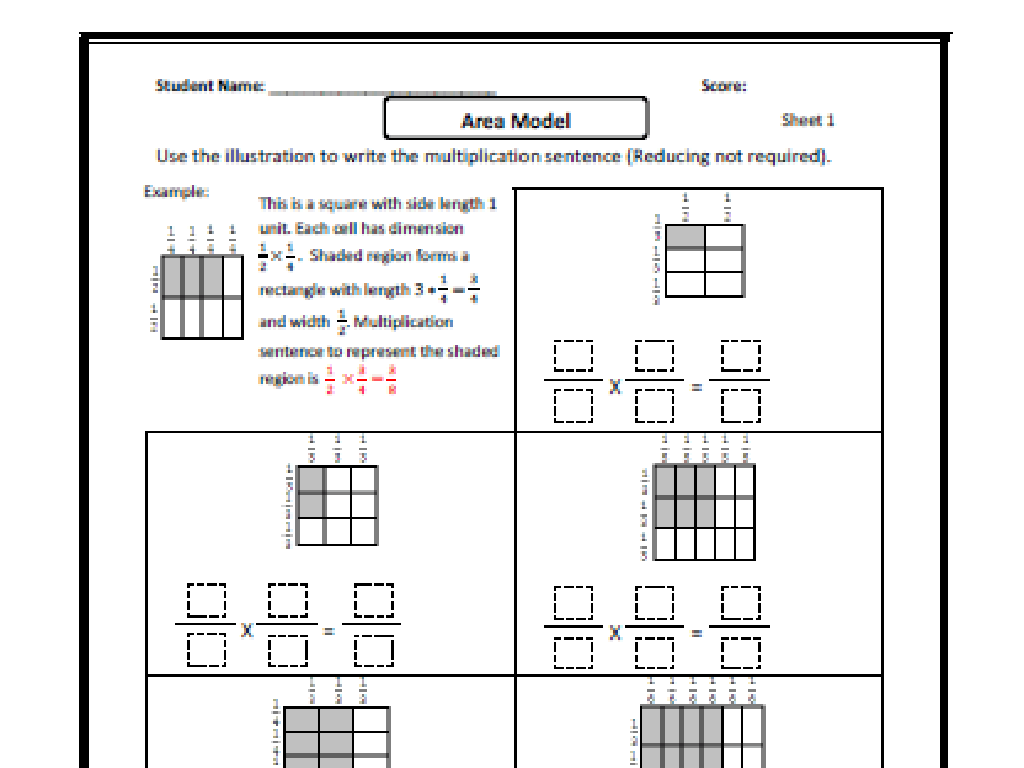Use Data From Tests To Compare Engineering-Design Solutions
Subject: Science
Grade: Seventh grade
Topic: Engineering Practices
Please LOG IN to download the presentation. Access is available to registered users only.
View More Content
Comparing Engineering-Design Solutions
– Understanding engineering significance
– Defining engineering-design solutions
– Solutions created to solve problems using a step-by-step approach
– Using data to compare solutions
– Analyze test results to evaluate different designs
– Today’s focus: Data-driven comparisons
– We’ll learn how to use data to determine the best design solution
|
This slide introduces students to the concept of engineering and its role in solving problems through design solutions. Emphasize the importance of engineering in everyday life and how it impacts the world around us. Explain that engineering-design solutions are systematic approaches to problem-solving, often involving multiple iterations and refinements. Highlight the importance of using empirical data from tests to objectively compare the effectiveness of different design solutions. Today’s lesson will focus on teaching students how to analyze and interpret data to make informed decisions about which engineering solutions are the most effective. Encourage students to think critically about how data can guide the design process and lead to improved outcomes.
Exploring Engineering
– Define engineering
– Application of science & math to solve problems
– Explore engineering fields
– Civil builds infrastructure, Mechanical focuses on machines, Electrical deals with circuits
– Engineering in daily life
– Bridges, cars, appliances are engineering marvels we use every day
– Comparing design solutions
– Use test data to evaluate different designs for effectiveness
|
This slide introduces students to the concept of engineering and its relevance in the world around them. Begin with a definition of engineering, emphasizing its role in applying scientific and mathematical principles to create solutions to real-world problems. Discuss various fields of engineering, such as civil, mechanical, and electrical, providing examples of each to illustrate their impact on society. Highlight how engineering is integral to many aspects of everyday life, from the structures we live and work in, to the vehicles and gadgets we use. Finally, explain how engineers use data from tests to compare and improve design solutions, ensuring they meet the desired criteria and function as intended. Encourage students to think of examples where different engineering designs can be compared, such as different bridge designs or household appliances.
Evaluating Engineering-Design Solutions
– Understand the design process
– Identify a problem, develop multiple solutions, and select the most effective one.
– Examples from different fields
– Look at how design solutions vary in robotics, environmental engineering, and software.
– Testing’s role in engineering
– Tests check if designs meet criteria and perform as needed.
– Comparing design solutions
– Use test data to evaluate which design is the most effective and why.
|
This slide introduces students to the concept of the engineering design process, which is a systematic approach to solving problems by creating functional products or processes. Provide examples from various fields to illustrate the diversity of engineering solutions, such as robotics for automation, environmental engineering for sustainability, and software engineering for computing. Emphasize the importance of testing in engineering to ensure that designs meet the desired criteria and perform reliably. Encourage students to think critically about how test results can be used to compare different designs and determine the best solution. This will help them understand the iterative nature of engineering and the value of data-driven decision-making.
Data in Engineering: Making Informed Decisions
– Understanding the role of data
– Data guides engineers in designing solutions.
– Exploring qualitative & quantitative data
– Qualitative: descriptive, Quantitative: numerical
– Data-driven decision making in engineering
– Analyzing data to choose the best design option.
– Case study: Bridge construction
– Comparing materials based on strength and cost data.
|
This slide introduces students to the concept of data in engineering and its critical role in decision-making processes. Data is the cornerstone of engineering, providing the evidence needed to evaluate and compare design solutions. Qualitative data includes descriptive information, while quantitative data is numerical and can be measured. Engineers use both types to make informed decisions, ensuring safety, efficiency, and cost-effectiveness. For example, when constructing a bridge, engineers compare materials by analyzing data on their strength and cost to determine the best option. Encourage students to think critically about how data affects everyday engineering decisions and to consider how they might use data in their own problem-solving processes.
Comparing Engineering Solutions
– Importance of comparing solutions
Comparing helps select the best design based on specific needs and constraints.
– Criteria for effective comparison
Consider factors like cost, efficiency, sustainability, and user requirements.
– Case study: Bridge design comparison
Analyze two bridge designs to understand how different criteria affect the final choice.
– Evaluating best design choice
Use data to determine which design meets the criteria most effectively.
|
This slide introduces the concept of comparing different engineering solutions to determine the best option. Emphasize the importance of comparison in making informed decisions. Discuss various criteria such as cost, efficiency, and sustainability that are crucial for comparison. Use a case study of two bridge designs to illustrate how these criteria can be applied in a real-world scenario. Encourage students to think critically about how each design fares against the set criteria and to use data from tests to make objective comparisons. This will help them understand the practical aspects of engineering design and the decision-making process involved.
Analyzing Test Data in Engineering
– Interpret data from engineering tests
– Examine graphs, charts from experiments
– Identify patterns and trends in data
– Look for consistent results or anomalies
– Make decisions based on test data
– Choose the best design using evidence
– Understand impact on design solutions
|
This slide aims to teach students how to analyze and interpret data obtained from tests in engineering projects. Students should learn to examine various forms of data representation, such as graphs and charts, to understand the outcomes of their experiments. Identifying patterns and trends is crucial in predicting future outcomes and improving designs. Making informed decisions involves selecting the most effective engineering solution based on solid evidence from test data. Encourage students to consider how data-driven decisions can lead to improved design solutions and to think critically about the reliability and validity of the data they use.
Group Activity: Design, Test, and Compare
– Form small design teams
– Create a paper airplane
– Test flight performance
– Measure how far and how stable each plane flies
– Record and compare data
– Use the collected data to determine which design is superior
|
This group activity is aimed at teaching students about the engineering design process through a hands-on project. Divide the class into small groups, each tasked with designing and constructing a simple paper airplane. Provide materials and instructions for making paper airplanes, ensuring safety and fair testing conditions. Each group will then test their airplane, measuring flight distance and stability, and record their data. After testing, groups will compare their results with the class to understand how different designs can affect performance. Encourage creativity and problem-solving as students iterate on their designs. Possible variations include adjusting plane size, wing shape, or weight distribution. This activity will help students grasp the importance of testing and data in comparing engineering solutions.
Presenting Your Engineering Findings
– Analyze your group’s data
– Prepare a presentation on your design
– Highlight key aspects of your airplane design
– Share your test results
– Discuss the success and flight distance
– Suggest improvements for your airplane
– Think about aerodynamics, weight, and shape changes
|
This slide is aimed at guiding students through the process of presenting their engineering project findings. Each group will analyze the data collected from their airplane tests. They should prepare a short presentation that outlines their design process, the materials used, and the rationale behind their design choices. Students will then present their test results, including the distance their airplane flew and any other relevant data points. Finally, they should discuss potential improvements to their design based on their test outcomes, considering factors such as aerodynamics, weight distribution, and structural integrity. Encourage creativity and critical thinking, and remind them to practice their presentation to ensure clarity and confidence.
Class Discussion: Evaluating Our Engineering Designs
– Reviewing test results
– Data’s role in design comparison
– How did the numbers guide our design choices?
– Sharing successful elements
– Highlight parts of the design that met or exceeded expectations
– Discussing areas for improvement
– Openly talk about what didn’t work and brainstorm better solutions
|
This slide prompts a class discussion reflecting on the outcomes of tests conducted on different engineering designs. Encourage students to think critically about what the data from their tests tells them about the effectiveness of their designs. Discuss how quantitative and qualitative data can provide insights into which aspects of their designs worked well and which did not. This is an opportunity for collaborative learning where students can learn from each other’s successes and mistakes. As a teacher, facilitate the discussion by asking probing questions, guiding students to think about the scientific principles behind their designs, and how they can apply this knowledge to future projects.
Engineering Practices: Data-Driven Decisions
– Recap: Engineering & Data Importance
– Homework: Reflect on Activity
– Write about the class activity and how data helped you
– Influence of Data on Decisions
– How did data guide your engineering choices?
– Research a Famous Engineering Project
– Choose any renowned engineering feat for next class
|
This slide aims to summarize the key points of engineering practices, emphasizing the role of data in making informed decisions. For homework, students are tasked to write a reflection on the in-class activity, focusing on how the data they collected influenced their engineering decisions. This exercise is designed to reinforce the concept that data is crucial in evaluating and comparing engineering solutions. Additionally, students should prepare for the next class by researching a famous engineering project, which will help them understand the practical application of engineering practices in real-world scenarios. Encourage them to think about the data that might have been used in the planning and execution of the project they choose to research.





